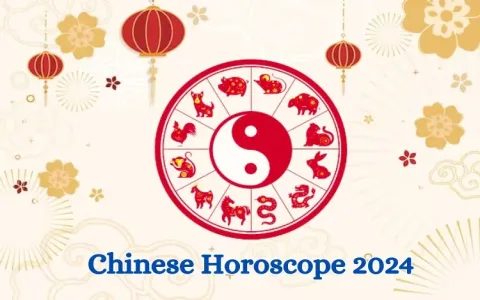Man, April 2022. I remember looking at my life and realizing the love tank felt totally empty. Not like we were fighting, but everything was just… routine. Like driving the same old car to the same boring job every day. I’m a Virgo, right? I hate inefficiency, especially emotional inefficiency. I decided I couldn’t just let things drift. I needed a system, a playbook, some actionable “Love Tips” that I could actually track and measure.
I had been reading this ridiculous self-help book—don’t ask me the name, I threw it away—but it drilled in three main concepts for relationship revival. They sounded absolutely stupid, but I needed data, so I decided to treat the whole month like a mandatory, real-world experiment on my long-suffering partner. I called it Operation Heart Check. The rules were simple: stick to the script for four weeks, document the chaos, and see what breaks.
The Implementation Phase: Following the Guru’s Rules
My first step was identifying the core problems. The biggest issue was feeling disconnected, like roommates exchanging logistics instead of lovers sharing feelings. So, the three tips I focused on were direct attacks on routine and surface-level communication. I printed them out and taped them to my office wall, just to make it official.
- Tip 1: The Daily 7-Minute Check-in. Non-negotiable, focused discussion about feelings, goals, and fears. Zero phones allowed.
- Tip 2: Mandatory Novelty Date Night. Once a week, we had to do something we had never done before, specifically engineered to generate shared new memories.
- Tip 3: The Affirmation Blitz. Three specific, sincere compliments given daily. Must be concrete and observable.
I kicked off the process on April 1st. Talk about an April Fool’s joke.
Week 1: The 7-Minute Horror Show.
I started strong. Monday night, I grabbed my partner, sat them down on the sofa, and declared, “It’s 7-Minute Check-in Time!” They looked at me like I’d just started speaking Martian. I tried to frame the discussion exactly as the book suggested—”How are you feeling emotionally about our shared future?” The forced formality instantly killed any sincerity. My partner was clearly uncomfortable. By Wednesday, they were actively resisting. They’d set a timer on their phone, and the minute the alarm blared, they’d physically jump up and run to the kitchen or the spare room. It wasn’t connection; it was clock-watching. I felt like a terrible parole officer trying to interview an unwilling witness. This system delivered nothing but strained silence and mild resentment.
Week 2: Novelty Fails Hard.
The book promised that shared new experiences create instant intimacy. Total rubbish. I booked a spontaneous introductory aerial yoga class. I thought it was edgy and fun. Turns out, my partner has serious equilibrium issues and spent 45 minutes trying not to throw up while hanging upside down in a silk hammock. We finished the night in silence, driving home, me feeling guilty and them feeling dizzy and angry. The supposed “shared memory” was one of mutual suffering. My attempt to escape routine just created a new, actively unpleasant routine.
Week 3: The Suspicion Bomb.
This was the Affirmation Blitz. I committed to observing and praising three things every day. “Wow, you really organized those spice jars well!” “I appreciate how efficiently you loaded the dishwasher!” I was using the adjectives the guru said were key. The result? Total and utter suspicion. Around Thursday, my partner actually stopped me while I was complimenting their choice of socks and asked, point blank, “What are you trying to hide? Are you about to tell me you quit your job or that you wrecked the car?” They genuinely thought my sudden, structured appreciation was a sign of impending catastrophic news. The compliments were so forced, they sounded fake, which just fostered mistrust instead of affection.
The Pivot: Abandoning the System for Sanity
By the fourth week of April, I was exhausted. I looked at the data I had collected—mostly records of failed attempts, awkward silences, and unnecessary arguments—and realized the system was the problem. Trying to perfectly implement someone else’s idea of love felt cold and artificial. I needed to pivot, and fast.
I scrapped the list. I stopped setting timers. I decided to just take the spirit of the advice and apply it organically, without the pressure of a stopwatch or a checklist. This is where the real practice finally began.
I stopped trying for 7 structured minutes and instead focused on 30 seconds of real connection when one of us walked in the door. I’d drop everything, make eye contact, and ask a single, genuine question, like “How rough was traffic today?” Not the deep-seated fear and future talk, just simple, present-tense acknowledgement. It immediately felt better. Less pressure, more genuine interaction.
I stopped trying to book weird dates and, instead, focused on reclaiming the fun in our existing routine. We went back to Friday pizza night, but I made an effort to put my phone in a drawer and leave it there. We just talked nonsense, or watched a terrible movie, or stayed up too late laughing. It wasn’t novel, but it was us.
The affirmations got stripped down too. Instead of three formal compliments, I just started saying “Thank you” more often, especially for things I usually took for granted. “Thanks for making coffee,” “Thanks for finding my keys.” These little acknowledgments were less flashy, but they were true. They didn’t inspire fear; they inspired cooperation and warmth.
Conclusion: The Real Love Tip
I ended April 2022 feeling much better, but not because of the self-help book. I went into the month trying to measure and optimize love, which is impossible. What I learned, by forcing myself through the failure of the strict system, was that authenticity is the only metric that matters.
I trashed the specific tips, but I kept the underlying goal: intentional connection. I failed miserably at being the guru’s perfect partner, but in doing so, I succeeded at being a better version of myself in this relationship. The lesson is always the same: systems work fine for software deployment, but they fail utterly when dealing with actual human hearts. You have to break the rules to find out what works for your own setup.





